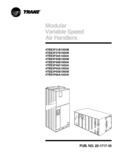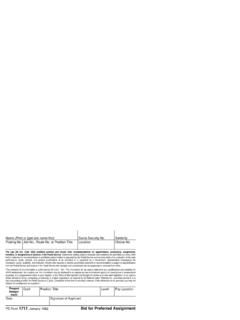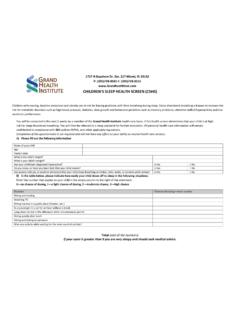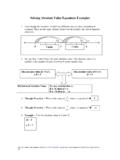Transcription of ANALYSIS OF BROWNFIELD CLEANUP ALTERNATIVES …
1 ANALYSIS OF BROWNFIELD CLEANUP ALTERNATIVES (ABCA) US EPA BROWNFIELD CLEANUP GRANT PROGRAM Sibley Mill 1717 Goodrich Street Augusta, GA Introduction and Background The subject site is located at 1717 Goodrich Street in Augusta, GA and consists of a former industrial textile manufacturing site consisting of several buildings totaling approximately 518,000 square feet. The site is acres of land located between the Savannah River and the Augusta Canal. The Sibley Mill was constructed on the canal in 1881 and operated continuously until it closed in 2006. It is one of only four remaining textile structures remaining on the canal.
2 Two of these have been successfully redeveloped as LEED certified buildings consisting of mixed use office, retail and residential. One is still being used as an active textile operation. The Sibley Mill is the most historically significant of the Augusta Mills from an architectural standpoint, and it has remained vacant and underutilized since it closed in 2006. Sibley and two of the other sites still receive their electrical power from on site hydro-electric generating station powered by water from the Augusta Canal, making this site a true energy efficient facility. The main obstacle to redevelopment of the Sibley Mill is the existence of hazardous substances on the site and in the remaining buildings.
3 The authority purchased the site on August 31, 2010, following the All Appropriate Inquiry process. This ABCA, once implemented, will all ow the Augusta Canal Authority to continue the environmental CLEANUP that will ultimately lead to the redevelopment of the site. Once the site is cleaned up, the site will be redeveloped and returned to productive use. The planned reuse for the site includes residential, green energy generation, job incubation and office space. Redevelopment costs are estimated to exceed $30 million dollars generating a 30 percent increase in local tax revenue, generating 175 jobs during construction and 20 permanent jobs after construction.
4 Additionally one of the City s most historic resources will be preserved. A BROWNFIELD Corrective Action Plan (CAP) was prepared in June 2010 for the site. This ABCA incorporates and expands upon the elements of this plan which has been reviewed and approved by the Georgia Environmental Protection Division (EPD). Contamination Issues ANALYSIS of BROWNFIELD CLEANUP ALTERNATIVES Sibley Mill, Augusta, GA. 2 Augusta Capital signed an option in May 2007 to purchase the site and subsequently completed the following environmental assessment/activities prior to cancelling the option in October 2008.
5 During that time, the following assessments were completed: Phase 1 Environmental Site Assessment prepared by Advanced Environmental Options, Inc., Spartanburg, SC, June 2007. Phase II Environmental Site Assessment prepared by Advanced Environmental Options, Inc., Spartanburg, SC, October 2007. Soil Sampling Report, Alternative Construction and Environmental Solutions, Inc., Augusta, GA, August 2007. Review and Update of prior environmental assessments, Alternative Construction and Environmental Solutions, Inc., Augusta, GA, January 2008. UST Closure Report by Advanced Environmental Options, Inc., Spartanburg, SC, April 2008 for removal of a 3,000-gallon underground storage tank holding #6 fuel oil for backup heat.
6 The Augusta Canal Authority commissioned updates of the Phase I & Phase II Environmental Assessments to evaluate the potential for environmental liabilities on the subject site prior to the purchase of the property. American Environmental & Construction Services prepared the reports dated May 20, 2010. These reports were conducted to meet the requirements of All Appropriate Inquiry (AAI) by the Authority prior to purchase. Potential environmental concerns identified on and in proximity to the subject site included: Caustic Tank &/lines. Dye Tank & lines. #6 Fuel Oil Tank.
7 PCBs. Pesticides and Herbicides. Soil contamination consisting of lead, mercury, cadmium, arsenic, and petroleum constituents. Lead paint. Asbestos. Soil samples were collected from 83 locations and were analyzed for a variety of constituents, primarily volatile organic compounds (VOCs), Semi-volatile organic compounds (SVOCs), metals, pesticides and PCBs. The Phase II environmental assessment confirmed the existence of soil contamination including: Metals: arsenic, barium, cadmium, chromium, lead, and mercury ANALYSIS of BROWNFIELD CLEANUP ALTERNATIVES Sibley Mill, Augusta, GA.
8 3 Semi-Volatile Organic Compounds: Benzo{a} anthracene, Benzo {a} pyrene, Benzo {b} fluoranthene, Benzo {k} flouranthene, Chrysene, Dibenz {a} anthracene, Indeno {1, 2, 3- cd} pyrene, Phenanthrene, Acetophenone Volatile Organic Compounds: tetrachloroethene, trichlorethene, benzene, carbon disulfide Lead-based paint, asbestos and PCBs were found within some of the buildings above Type 1 Risk Reduction Standards at various locations on the site. Most of these compounds have been attributed to the former textile operations with the exception of lead in the soil which can most probably be attributed to the use of the site as the Confederate States Powder Works operation during the Civil War.
9 Seven borings were converted to groundwater monitoring wells. Groundwater samples from each well have been tested for petroleum constituents associated with the on-site UST which was removed by the prior owner. These tests found VOCs in four locations and RCRA metals in two locations. These locations will be retested throughout the remediation process and it is anticipated that once the soil remediation is complete the groundwater samples will be clean. Based on the findings of these assessments, a Prospective Purchaser Corrective Action Plan (PPCAP) and an application for approval as a BROWNFIELD site, dated June 2010, was submitted to the Georgia Environmental Protection Division (GAEPD) for approval under the Georgia Hazardous Site Reuse and Redevelopment Act.
10 On August 26, 2010, The GAEPD approved the PPCAP and confirmed that the site met the Brownfields qualifying criteria established under the Act (Attachment B). Applicable Laws The applicable law that relates to the CLEANUP of the site is Section 12-8-200 of the Hazardous Site Reuse and Redevelopment Act (HSRRA) under the authority of the Georgia Department of Natural Resources, Environmental Protection Division Hazardous Waste Management Branch, also known as the Georgia BROWNFIELD Program. Augusta Canal Authority (ACA), as grantee, and as such, has CLEANUP oversight responsibility.




![foKkiu la[;k&01@2017 fcgkj iqfyl] x`g foHkkx] fcgkj ljdkj ...](/cache/preview/b/1/9/e/5/a/f/9/thumb-b19e5af991ffbe2ecb6d3776540d19df.jpg)
